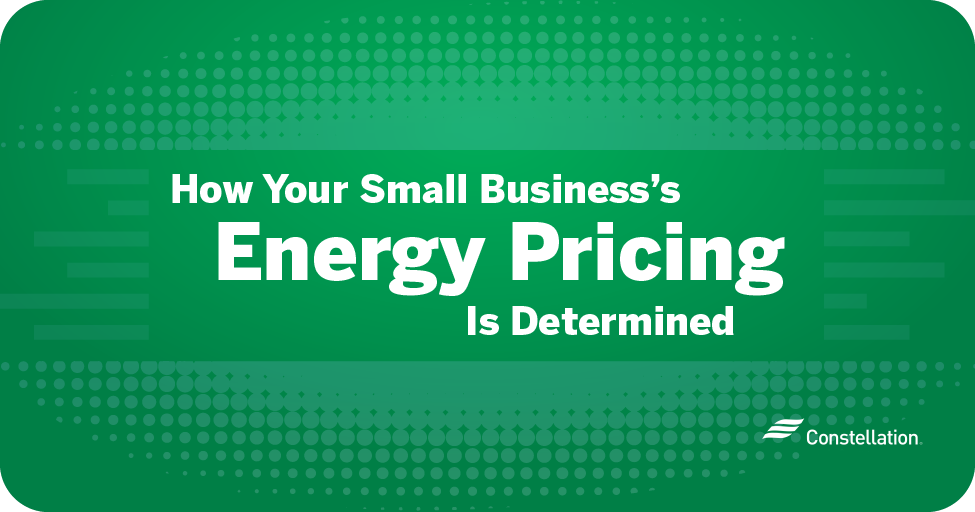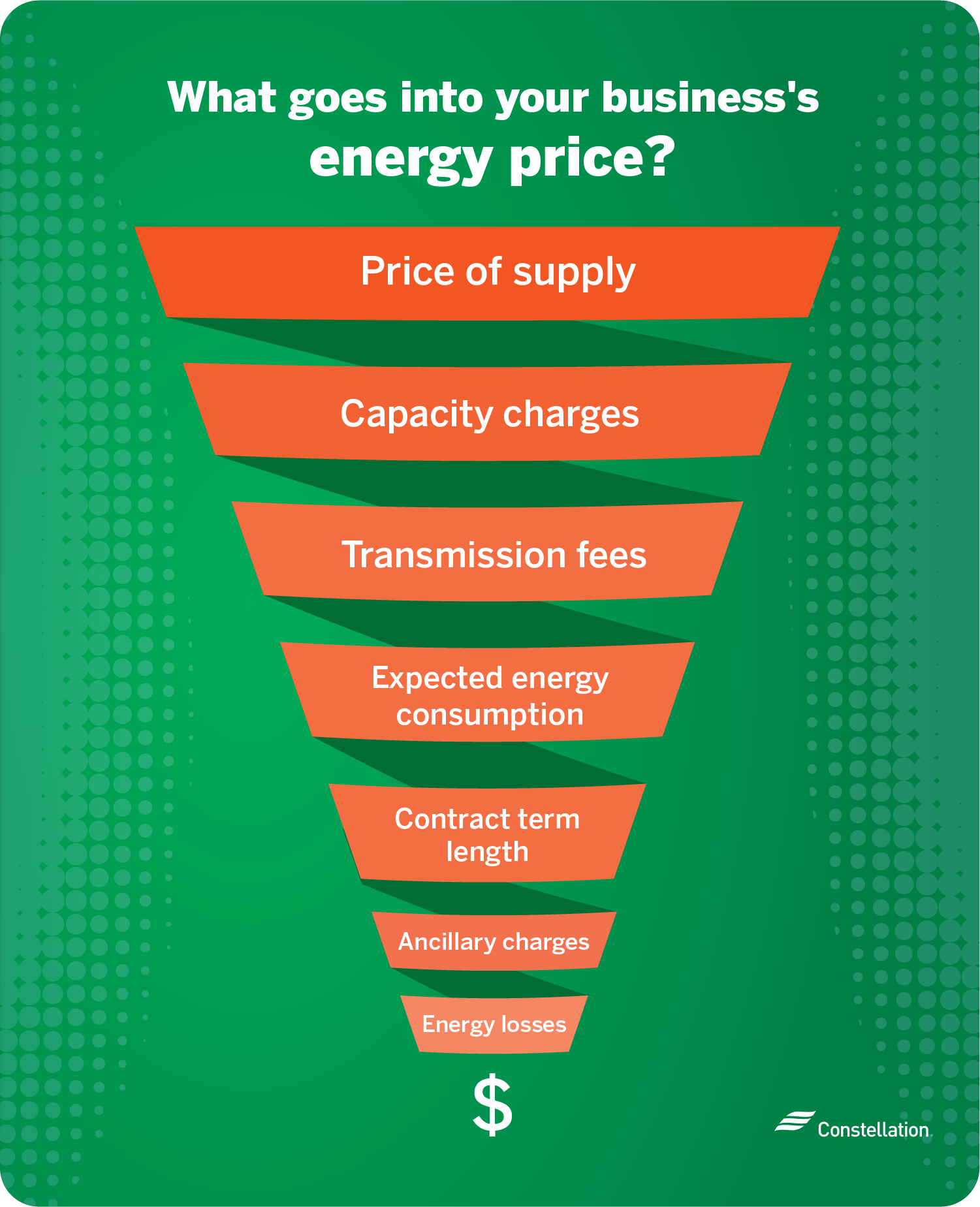
- Category:
Energy Choice -
Last updated:
March 17, 2022
How Your Small Business’s Energy Pricing Is Determined
Ever wonder how the prices of electricity and natural gas are determined for small businesses? It’s an important question if you want to understand where your business’s energy costs come from. There are quite a few charges and fees that combine to make up your total costs, and each of them are worth knowing. This is in addition to the external factors that have an effect on the price you pay for energy.
By breaking down your monthly costs and understanding all the components of your electricity price, you’ll be able to determine what your biggest energy expenses are and start taking steps to reduce them.
The different components of your business’s energy price
As far as who sets your business’s electricity price, the total cost is actually made up of various charges and fees. Some of these charges can be controlled through your energy usage patterns, while others are determined solely by your energy provider, or by the changes in the market.
Although the exact names and costs may differ depending on who your energy provider is, here are some of the more common charges and fees that help determine the price of electricity for businesses.

Price of supply
The rate you pay for the actual energy you use is known as your price of supply. What this price is and how often it changes will depend on how your energy plan and rate are structured. For example, you may have a fixed- or variable-rate energy plan, or a “blend” of multiple plans. Each plan option offers a different price of supply, so the one you choose will have an impact on your business’s overall energy pricing.
The amount of electricity you use is measured and billed in kilowatt-hours (kWh). Understanding what a kWh is can help you curb your business’s energy consumption and limit your overall supply charges.
If your business operates on natural gas, your usage is measured in Ccf (or one hundred cubic feet). Additionally, you’re billed based on your price per therm. The average cost per therm of natural gas is always changing, and tracking these changes can help you prepare for shifts in your business’s energy price.
Capacity charges
Capacity charges are collected by energy providers in order to ensure that there’s enough energy to go around during times of peak usage. For example, extreme temperatures lead to more people using their air conditioning or heat, which use a lot of energy. Energy providers need to invest in the system in order to accommodate those times of high demand, and that cost is passed on to the customer.
Transmission fees
Another important electricity price component is your transmission fee. Transmission fees are assessed in order to cover the cost of transporting energy from the generation plant to the electricity distributor. Depending on your situation, this fee may be billed by either your energy provider or utility company.
Expected energy consumption
Energy providers will take your anticipated energy consumption into account when determining your overall energy price. For example, businesses who use more energy may end up paying more than other, less energy-dependent businesses.
Unlike capacity charges, which account for energy use across the whole system, this cost is determined by your specific business’s energy use. That’s why it’s important to monitor how much energy you’re consuming in your operations. Luckily, there are several small-business energy efficiency tools that make it easier to monitor and manage the amount of energy your small business uses.
Contract term length
The duration of your contract can impact how electricity is priced for your small business. By opting for a longer-term energy contract, you may be able to secure a lower price than if you went with a short-term option. When developing your small-business energy procurement strategy, you should establish your ideal contract length, as well as make sure your energy provider offers your desired term length.
Ancillary charges
If you do a breakdown of your small-business energy price, you’ll see that a portion of it covers ancillary services. These services help to maintain and repair the energy system from which you draw your energy.
As an example, if the electrical lines around your business are damaged during a storm, your ancillary charges may be used to pay for the labor and equipment it takes to restore them.
Energy losses
The final component of your electricity price is line losses. The charge for line losses covers the energy that’s lost between the generation and distribution phases. Between the years 2015 and 2019, an estimated 5% of all electricity transmitted and distributed in the United States was lost. Natural gas losses can also occur, meaning natural gas customers are subject to line loss charges, as well.
Securing the best energy price for your small business
Breaking down your small-business energy price can help you determine exactly what you’re being charged for each month. This allows you to better identify the factors that influence your energy costs the most and start looking for ways to limit your expenses.
Following some small-business energy-saving tips can be an effective way to reduce your energy costs. But to maximize your savings, you may want to consider changing your business’s energy plan or switching your energy supplier. There are many small-business energy solutions to explore, so be sure to shop around and compare rates until you can secure the best energy price for your business.




